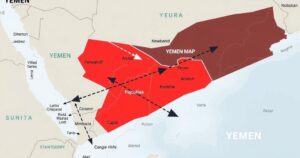Tropical Cyclone Zelia: Anticipating Severe Weather Impact in WA

Tropical Cyclone Zelia, anticipated to reach the northwest coast of Australia by Friday evening, poses significant risks, especially to Port Hedland. With winds forecasted at 205 km/h and gusts up to 290 km/h, the cyclone represents a category five threat, raising discussions about the possible need for a category six due to heightened intensity from climate change effects. Local preparedness is crucial as damage and severe weather are expected.
Severe Tropical Cyclone Zelia is approaching the northwest coast of Australia, with anticipated landfall expected by early Friday evening. This significant storm poses considerable risks to Western Australia, particularly impacting Port Hedland, the region’s largest town and busiest iron ore export port. Strong winds could affect coastal and inland areas, including Marble Bar, Tom Price, and Paraburdoo.
Should Zelia avoid direct strikes on towns, it is still likely to inflict considerable damage. The Bureau of Meteorology forecasts sustained winds reaching around 205 kilometers per hour and gusts potentially exceeding 290 kilometers per hour, capable of devastating infrastructure, including homes and power lines. As a category five cyclone, it represents the highest level of severity, and concerns around climate change may necessitate the future inclusion of a category six on the scale of cyclone classification.
Cyclones worldwide are categorized from 1 to 5 based on their wind speed and destructive potential. Category five storms feature maximum winds surpassing 200 kilometers per hour and cause widespread destruction. With climate change leading to increased cyclone intensity, scientists advocate for a new category to accurately communicate the heightened risks associated with tropical cyclones that are exacerbated by global warming.
While it remains uncertain if Cyclone Zelia is a direct result of climate change, extensive research indicates a correlation between global warming and the intensification of tropical cyclones. Rising ocean temperatures contribute energy that fuels these storms, leading to more rapid intensification. Record high sea temperatures off Australia’s northwest coast this summer have reached levels 4 to 5 degrees Celsius above normal, heightening the risk of severe cyclones.
The slow movement of tropical cyclones, worsened by climate change, compounds the dangers they pose by prolonging heavy winds and rainfall in affected areas. Cyclone Zelia’s current forward speed is approximately 11 kilometers per hour, suggesting that communities can expect substantial impacts over extended periods. The strength of winds typically persists well beyond the cyclone’s eye, exacerbating destruction on land despite fluctuations in speed.
Currently, wind speeds around Port Hedland range from 70 to 100 kilometers per hour, which is concerning but manageable. However, conditions are expected to deteriorate rapidly as the cyclone approaches. The storm has already caused localized flooding and disrupted transport infrastructure, and further impacts from a significant storm tide are anticipated, which may flood coastal roads and properties.
As Cyclone Zelia progresses inland over the weekend, it will gradually weaken but is still likely to produce heavy rains and strong winds affecting communities far inland. Continued updates will be available from the Bureau of Meteorology online. Residents in threatened areas are urged to consult the Emergency WA website or download the Emergency WA app for the latest warnings and community alerts.
In summary, Tropical Cyclone Zelia poses a serious threat to Western Australia, particularly to Port Hedland and surrounding areas. With extreme wind speeds and forecasts of substantial rainfall, the cyclone is likely to cause critical damage even without a direct hit. This event reiterates the growing concern over cyclones intensified by climate change, highlighting the need for enhanced categorization and preparedness as extreme weather events become more frequent in a warming climate.
Original Source: theconversation.com








